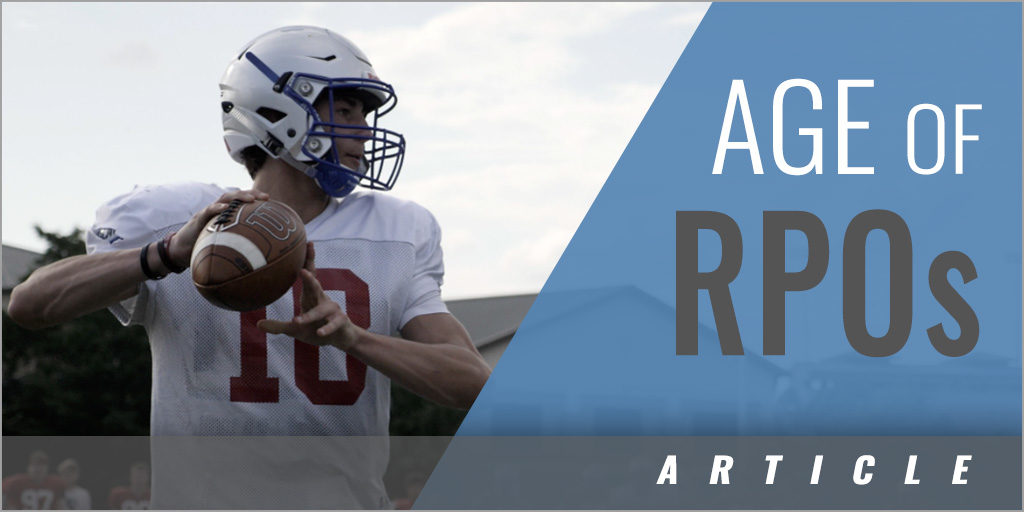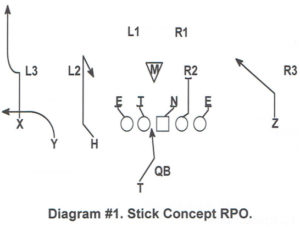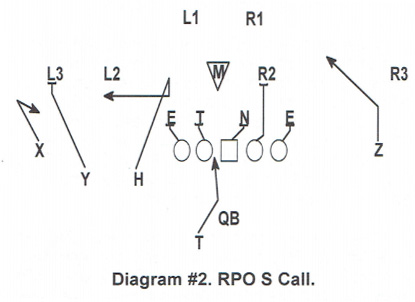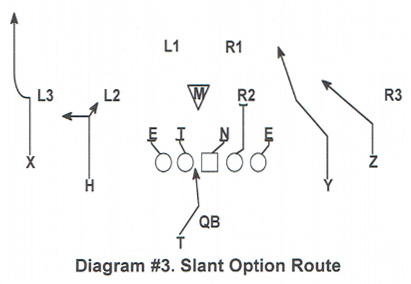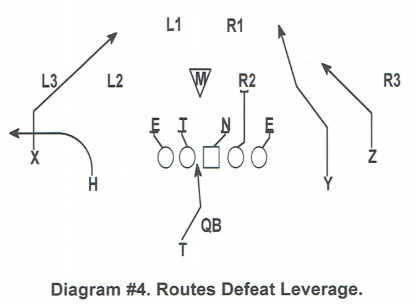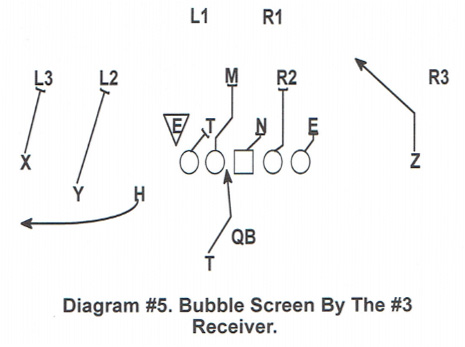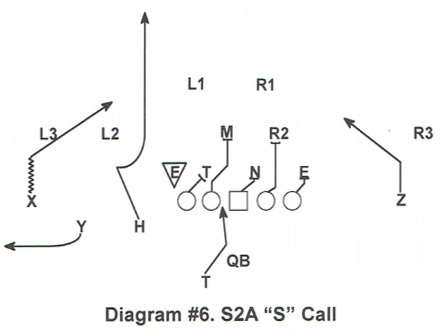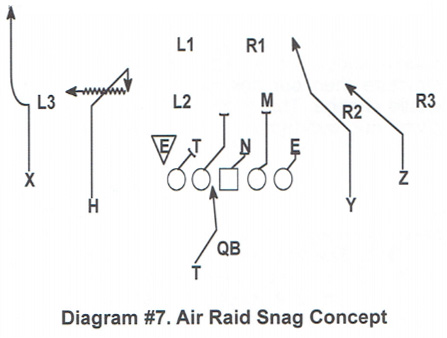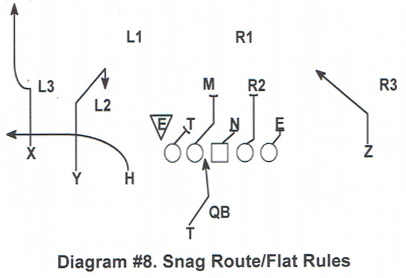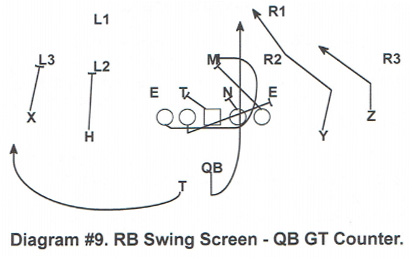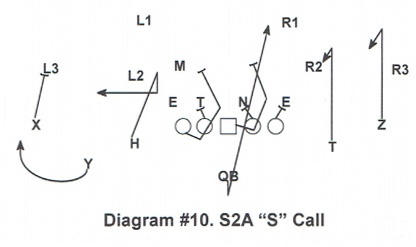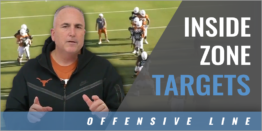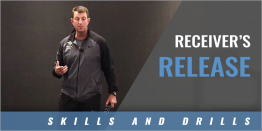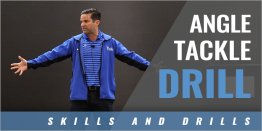|
By: Rich Hargitt - Emmett HS (ID) Originally Published in: 2019 Nike Coach of the Year Clinic Manual - by Earl Browning Provided by: Nike Coach of the Year RPOs are without a doubt a huge and growing part of the football landscape. We have been running RP's as a major portion of our offense since 2011. and it has grown as a percentage of plays called with each passing season. We are determined to expand and enhance this part of our game because it allows us to attack so much of the field. We also love RPOs because they force the defense to play assignment focused football just as our triple option and wing-t predecessors did. It is difficult to blitz us or play exotic defenses because so many times we play a "vanilla" style to be gap sound and structurally regular against our myriad of RPO structures. We install around 17 RPOs every spring, but we do not necessarily run each of these in each contest. This lecture explores only a few of these concepts but fundamentally breaks them down into two easy to understand categories. We run RPOs for a variety of reasons and have certain ones that attack certain coverages, but we can explain them in the two categories of locked and unlocked RPOs. A locked RPO is one that features the defensive end being blocked or locked, and so the reader is the linebacker at the second level near the B gap. An unlocked RPO is one in which the defensive end is not blocked, and the quarterback is reading the C-gap defender for his pull or give read. The read progression of an RPO quarterback, especially in the Surface To Air System, is not this simple. We expand and allow our quarterbacks to read things both pre-snap as well as post-snap on every play. The quarterback can go both front doors, the direction of the run, as well as a back door, direction away from the run. on each RPO at his discretion. This chapter is not able to handle the full understanding of how our quarterbacks read all this so for more information reach out to us at wvvw.surfacetoairsystem.com Locked RPOs As we previously stated, a Locked RPO is one in which the defensive end is blocked, and we are reading the second level, B-gap defender. To expediency and ease of understanding, we will use a 4-2-5 defense as our basic model in this chapter and read the defense accordingly. One of the most utilized RPOs in any spread offense is the Stick Concept RPO. (Diagram #1.)
The offensive lineman will lock the inside zone and block the backside three technique, and the two five techniques. The quarterback will read the middle linebacker. The quarterback can throw pre-snap to the front door slant side or the Stick Concept side on the backdoor of the read. If these reads are cloudy for any reason, he will read the play all the way out" by meshing with the running back and reading whether the middle linebacker plays inside or outside of the box. If the middle linebacker plays downhill into the box, the quarterback will disengage and throw the ball to the perimeter. However, if the middle linebacker expands to take away the Stick Concept, then the quarterback will hand the ball off in the box where the offensive lineman should have every remaining player blocked. This reading system is simple and efficient for the quarterback to execute. The fact that the play is always locked the quarterback will have some extra time to make his decision without the fear of being hit by the defensive end. Another example of this sort of locked RPO is an S Call. We utilize S Calls in the Surface To Air System to attack second level defenders and influence how the second level attempts to handle the box. In this RPO. we have the #2 receiver block the L-3 or corner and we run a Now Screen with the #1 receiver. The third receiver executes a Pivot Route. (Diagram #2.)
This RPO features the same read as the Stick Concept RPO. Again, if the middle linebacker attempts to attack the box or the 3 X 1 receivers, he will be in immediate conflict and expose himself to attack. These sorts of 3 X 1 RPOs are quite easy to read when they are locked. Of course. should the defense not play a two-safety structure then our answers in the RPO game would change. This generic defensive structure gives our quarterback clean reads and easy angles to attack the defense. When the offense utilizes RPOs that are locked from a 2 X 2 structure, then some issues need to change. The main issue is to run as an RPO. The offense must put a defender in conflict. It happens when the defensive end is left unlocked. But when the defensive end is locked, it is a bit more involved. The offense needs to have more "2-way go" or options style routes when it is in a 2 X 2 locked RPO scenario. One way that we do this in S2A is that we allow the slot receiver to execute a Slant Option Route (Diagram #3). The reason we do this is that the slot receiver can leverage the L-2 or flat defender.
The defense can and frequently does. use the L-2 as a half box and half field player and so he can confuse the quarterback from time to time in a 2 X 2 set. If the receiver can attack the defender with two different routes. then he can make himself "right" no matter what the leverage is. It also aides the quarterback because if the L-2 is a box player, he knows he will pull and throw the ball. But if the defender is aligned in a position making the read difficult, but clearly will jump the Slant Route, he cannot jump the Option Route. The defense could also elect to roll the safety down and tuck the L-2 back into the box. None of these defensive countermeasures are applicable if the receiver can leverage the defender with two different routes. The quarterback can just read the leverage and make his decisions accordingly. Another example of this is to run a concept such as Slant/Flat where the routes themselves can defeat leverage in 2 X 2 (Diagram #4).
Here the L-2 is playing the RPO, and the middle linebacker is not in conflict, but the Slant/ Route will win behind the L-2, and the Flat Route will win outside him. Provided the defense is playing quarters coverage, and the quarterback should know this based upon a pre-snap look, the L-2 has to pick one of those routes to cover or the middle linebacker must cover either leave the L-2 alone to cover two routes or he must leave the box to stop one of the routes. Unlocked RPOs The world of Unlocked RPOs is where we are behaving as if we are a Triple Option Offense. In these plays, we are leaving the defensive end, or first level C-gap player unblocked. We can read either side of the field pre-snap based upon leverage just like a Locked RPO. If we decide to read it out. we would read the defensive end for the give or pull and then proceed to attack the perimeter. One of the most classical ways to accomplish this from a 3 X 1 set is to execute a Bubble Screen by the #3 receiver (Diagram #5). This type of RPO allows the quarterback the autonomy to throw the ball pre-snap or to read the defensive end and play more of a triple option meets zone read type of football.
While this type of RPO certainly helps the nimble dual-threat quarterback, it is still a viable option for quarterbacks that are not as fleet of foot. The ability of the quarterback to "keep the defense honest" is the only requirement on his running ability. Of course, the more athletic the quarterback is, the more the defense will have to prepare. The quarterback can also feature an S2A "S" Call which most often has a pop pass by the #3 receiver. (Diagram #6) This type of RPO will be read from inside out with the quarterback reading the pop pass as his pre-snap look and the Slant/Bubble Concept combination as his post-snap read.
These types of RPOs allow the quarterback a great deal of flexibility in attacking modern defenses. The route structure has man and zone beating capabilities and allows us to call the play regardless of coverage. The defense must be able to play contain and force all while the offense is reading multiple defenders. Most times these plays are run from a 3 x 1 set because they are easier to force the defense to adjust. Next. we will take a look at some different versions of RPOs. We can call the standard Air Raid Snag Concept from a 2 X 2 unlocked structure, but this time there is a twist. We have added to the more modern world of things. We are allowing the Snag Concept to sit versus any coverage where there is vacated grass, but to pivot away from any coverage (Diagram #7).
This type of RPO allows us to attack a wide variety of defenses and we do not have to tip our hand and show a 3 X 1 structure. We can keep the defense balanced while also defeating their flank coverage all inside one simple route concept. It is a slightly more progressive way to run RPOS and allows the offense to carry fewer plays but have more options. The rule for us is this. If there is no route run to the flat. then the Snag Route may pivot. But if there is a Flat Route to the outside then the Snag Route is not allowed to pivot (Diagram #8). These variations in the RPO game allow us to create a wide variety of plays while appearing to be overly simplistic.
A defensive coordinator playing us will be made to feel that he is facing many plays when it is only a handful of well-designed plays with easy to remember rules attached. Another great addition to the Unlocked RPO family the last few years has been the addition of empty or 2 X 2 RPOs. These plays feature four receivers and the running back out in the route progression and the quarterback used as the run player. These plays are unlocked when the defense does not easily have a scrape player and thereby must use the defensive end in that position. It means the end will play slow and allow the quarterback to run the ball if he so chooses. We teach the quarterback to read the box or grass. If he has a numbers advantage in the box, he runs the ball. But if he has the leverage of grass in space. he throws the football. A great example of this is a Swing Screen by the running back paired with a Quarterback GT Counter Play. (Diagram #9).
This play gives the quarterback a lot of options and forces the defense to decide if he wants to peel a defender to the running back or leave that extra player in the box. We could also elect to utilize an S2A "S" Call and pair it with a double fold scheme run play (Diagram #10). This type of play gives the quarterback a host of options. These 2 X 2 RPOs also force the defense to decide whether they will play man or zone coverage.
If they play man coverage. they must be able to cover five athletes in space. But if they play zone coverage, they are at a disadvantage in the box area. The advent and proliferation of 2 X 2 style RPOs has added another arrow in the quiver to the Surface To Air System and given us a great tool to attack a variety of defensive structures. Conclusion RPOs have changed the landscape of college football and has begun to sweep through high school as well. We even see well-placed teams in the NFL incorporating them in their unique manners. The RPO is not so much a play but an overall philosophy of offensive instruction. We believe defenders that play loose and free of conflict tend to be particularly good and can create a great deal of havoc and damage on an offense. Therefore, we attempt to turn the game of football into a thinking game for the defense where they must identify formations. reads. and attacks on every snap of the game. We feel we are amazingly simple on offense and that we teach these plays with a high degree of detail. We do not have to have a long playbook because we have so many options inside the system. All options cannot be covered here. but hopefully, this presentation gives you an idea of what we do in the RPO game. It has been and will continue to be a large part of what we do S2A "S" Call in the Surface To Air system. |
